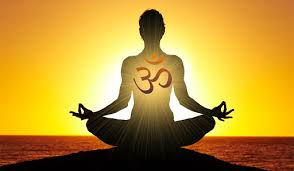Why Prana and Pranayama are the heart of Yoga Therapy.
- karenross23
- May 7
- 3 min read

Prana is the spark of life, the vital force that animates us and connects us to something far greater than ourselves. In Yoga Therapy, working with Prana is essential to healing—not just the body, but the whole self.
What Is Prana?
Prana is often described as life force energy—subtle, invisible, yet profoundly powerful. It flows through every cell of our body and radiates beyond us.
There are two main types of Prana:
Unmanifest Prana: pure consciousness or Higher Self (Purusha).
Manifest Prana: the creative life force energy at work in the body and mind.
Everything in nature, including us, is made of three qualities or gunas:
Sattva: calmness, balance, harmony.
Rajas: movement, activity, restlessness.
Tamas: inertia, heaviness, resistance.
How Prana moves depends on these qualities and the choices we make.

How Yoga Therapy Works with Prana
In Yoga Therapy, we help students feel into their Pranic body—not just perform movements. By pausing in simple poses like Tadasana or Savasana, students begin to sense where energy is blocked or freely flowing.
Take Virabhadrasana I (Warrior I), for example:
When grounded and aligned, energy rises through the spine.
If the ribs flare or alignment is off, Prana leaks.
As Yoga Therapists, we adapt poses, add mudras, and work with bandhas (energetic locks) to help restore flow.
“We’re not just moving the body—we’re moving energy.”
What Is Pranayama?
Pranayama means “expansion of the life force.” It’s often misunderstood as breath control, but it’s really about directing Prana through the breath.
We work with five Pranic flows (Vayus):
Prana Vayu: draws in breath and energy.
Apana Vayu: eliminates waste, releases.
Samana Vayu: balances digestion and assimilation.
Udana Vayu: helps expression and growth.
Vyana Vayu: circulates and integrates.
When any of these are blocked, we may feel stuck, anxious, fatigued, or overwhelmed.
One of the most powerful practices is Nadi Shodhana (alternate nostril breathing). It clears energy channels, balances the nervous system, and activates higher consciousness.

Mudra, Mantra, and Sound: Tools for Subtle Healing
Mudras are energetic hand gestures that create circuits for Prana to flow.
For example, Padma Mudra (Lotus Mudra) opens the heart and inspires compassion.
Mantra and sound help shift vibration and release emotion.
Chanting OM aligns us with the frequency of spiritual awareness.
“Prana flows where awareness and intention go.”
Diet, Lifestyle & the Energetic Body
Everything we consume affects Prana—food, thoughts, environment, medication.
In Yoga Therapy, we assess a person’s Ayurvedic constitution (dosha) and suggest supportive habits:
A Vata person may need warm, grounding routines.
A Kapha may need stimulation and movement.
A Pitta may need cooling practices and rest.
Healing is about restoring harmony and vitality—not adding more to an already busy system.

Emotions, Chakras & the Spiritual Path
Emotions like grief or fear can create energy knots (granthis) in the body. These can show up as physical tension or emotional overwhelm.
Yoga Therapy helps unwind these patterns by:
Working through chakras (energy centers).
Using mantra, movement, and breath to release and integrate.
This journey is not about fixing ourselves—it’s about remembering our wholeness.
“Healing happens when we awaken to who we truly are.”
Final Thoughts: The Role of the Yoga Therapist
As Yoga Therapists, we walk beside our students—not to heal them, but to support their own healing. We guide, reflect, and hold space while they rediscover their own power and light.
“Prana is the thread that weaves body, mind, and soul. Yoga Therapy is the loom that helps us reweave our patterns into wholeness.”





Comments